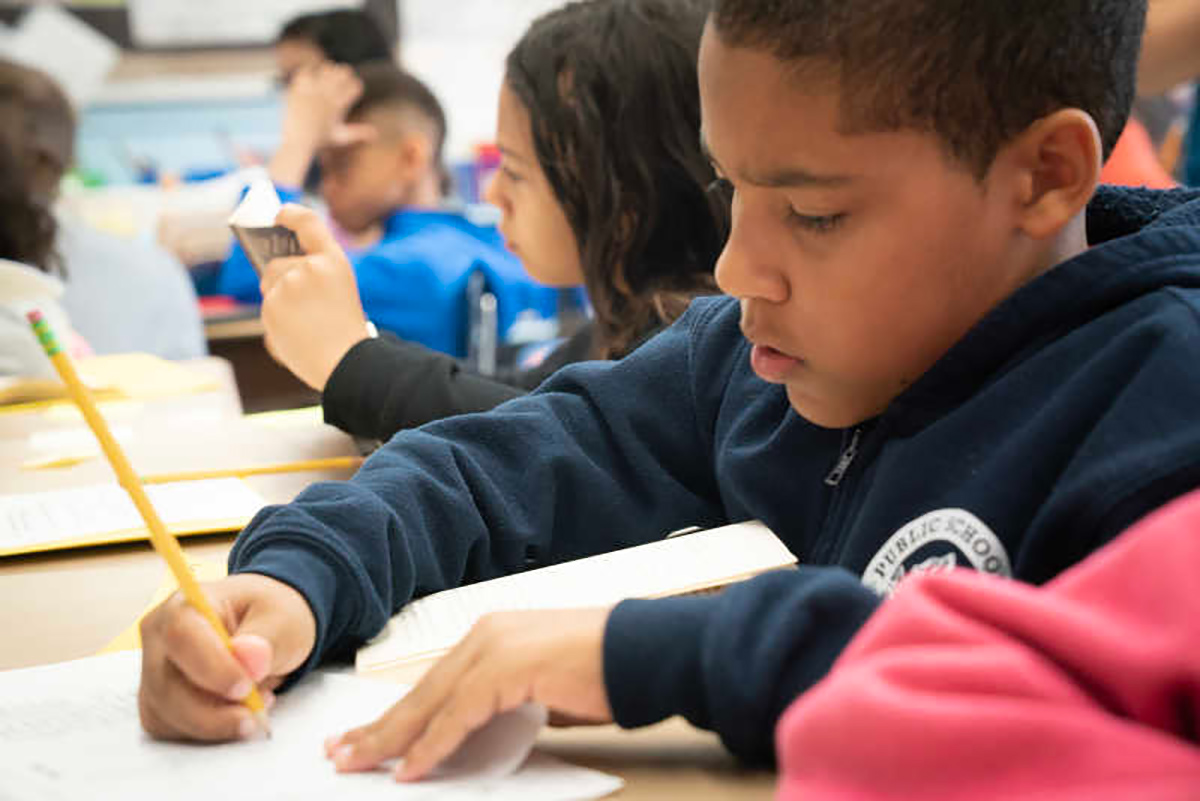“Writing is much harder than reading,” notes Forbes magazine writer Natalie Wexler, adding that only about a quarter of students score as “proficient” or above on national tests. Yet there has been little research to establish which methods of teaching writing work best.
One exception, says Wexler in her recent article, “The Puzzling Gap In Research On Writing Instruction,” is “a hugely popular curriculum developed by literacy guru Lucy Calkins,” Robinson Professor in Children’s Literature and founding Director of the Teachers College Reading & Writing Project (TCRWP).
Recently, the American Institutes for Research (AIR), a not-for-profit, independent research firm based in the greater Washington, D.C., area, completed the first objective, rigorous, quasi-experimental study of the TCRWP’s reading and writing workshop and Units of Study curriculum.
“Beginning in the 2nd year following TCRWP implementation…we observed statistically significant increases in ELA scores among TCRWP-implementing schools, as compared with the matched comparison schools,” write the study’s authors. “Between 5 and 7 years following adoption, ELA scores in TCRWP schools were higher by 0.22–0.38 standard deviations, suggesting cumulative effects of use of the TCRWP approach.”
Beginning in the 2nd year following TCRWP implementation…we observed statistically significant increases in ELA scores among TCRWP-implementing schools, as compared with the matched comparison schools.
— from a study of a writing curriculum developed by the Teachers College Reading & Writing Project
There were also gains for students from lower-income families and other vulnerable groups, though those gains were smaller.
Wexler says that further studies are needed to establish why a “multi-component approach” like TCRWP’s is successful: Is it “the peer editing?” she asks. “The focus on drafting? Both?”
Noting that writing places a huge burden on “working memory,” Wexler also calls for research on writing instruction begun at the sentence level.
“Some may object, if students are just combining sentences, they aren’t leveraging the power of writing to build and deepen their knowledge,” she acknowledges. “To be sure, there’s evidence that when students write about the content they’re learning, their comprehension improves; that’s the basis of an approach called ‘writing to learn.’ And it’s true that sentence combining—and some other sentence-level activities—probably won’t have that effect. But some sentence-level activities can provide powerful boosts to learning if they’re grounded in the content of the curriculum.”
